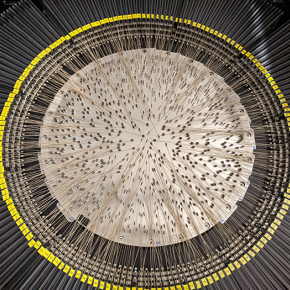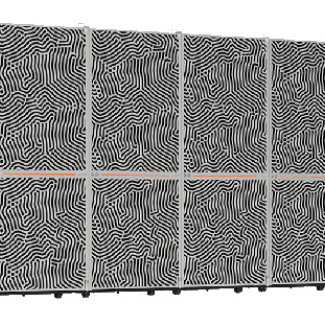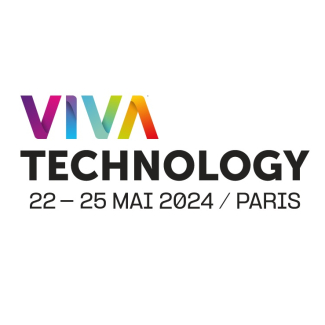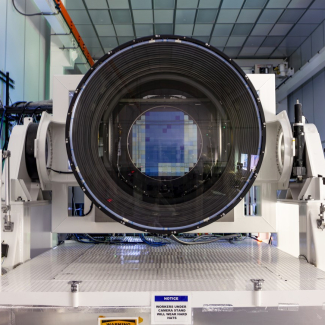
WEAVE: an instrument to analyse the Universe's light
|
|
The WEAVE spectrograph, which is supported in France by the CNRS, the Paris Observatory - PSL and the Côte d'Azur Observatory, has arrived at its destination in the Canary Islands. The new instrument meets the needs of the astronomical community by providing them with a more effective means of observing the Universe. Tests of the spectrograph's components have confirmed its outstanding capabilities, and it is expected to begin observing the sky in October 2021.
Astronomers can infer a great deal of information about celestial objects by analysing the light they emit. This analytical technique, called astronomical spectroscopy, has made great strides over the past forty years with the development of what is known as multi-object spectroscopy, which simultaneously studies the light emitted by several targets, and it is now making a new leap forward thanks to the WEAVE spectrograph.
The new instrument will deploy almost a thousand optical fibres over a very wide field of view, and will be able to simultaneously study the light emitted by an equivalent number of astronomical objects. The versatility of the spectrograph will enable astronomers to work more efficiently, helping them to make advances in astrophysics in such areas as the study of the evolution of galaxies and of quasars, which are extremely luminous galactic nuclei.
Its main components have now arrived at the Roque de los Muchachos Observatory (Canary Islands, Spain), where WEAVE is due to be installed this summer on the William Herschel telescope, and are performing optimally. Based on these results, WEAVE can be expected to provide high quality spectra. Its on-sky commissioning is scheduled for October 2021.
The consortium that designed WEAVE involved teams in the UK, the Netherlands, Spain, Italy, Mexico and France. In France, it benefited from the expertise of the Galaxies, Stars, Physics and Instrumentation Laboratory (Paris Observatory- PSL/CNRS) and the Lagrange Laboratory (CNRS/Côte d'Azur Observatory/Côte d'Azur University) and from the support of the Observatoire des Sciences de l'Univers Terre-Homme-Environnement-Temps-Astronomie (formerly Besançon Observatory; CNRS/University of Burgundy - Franche-Comté).
In France, the construction of WEAVE was funded by the CNRS, the Paris Observatory-PSL, and the Île-de-France1 and Bourgogne-Franche-Comté regions. Several other international bodies also contributed to its funding:
- in the UK: the Science and Technology Facilities Council (STFC),
- in the Netherlands: the Netherlands Research School for Astronomy (NOVA), and the Dutch Science Foundation (NWO),
- in Spain: the Canary Islands Institute of Astrophysics (IAC), the international Isaac Newton Group of Telescopes, and the Spanish Ministry of Economic Affairs and Digital Transformation,
- in Italy: the National Institute for Astrophysics (INAF),
- in Mexico: the National Institute of Astrophysics, Optics and Electronics (INAOE),
- in Sweden: Lund Observatory, and Uppsala University,
- in Germany: the Leibniz Institute for Astrophysics Potsdam (AIP), and the Max Planck Institute for Astronomy (MPIA),
- in the United States: the University of Pennsylvania,
- and in Hungary: the Konkoly Observatory.
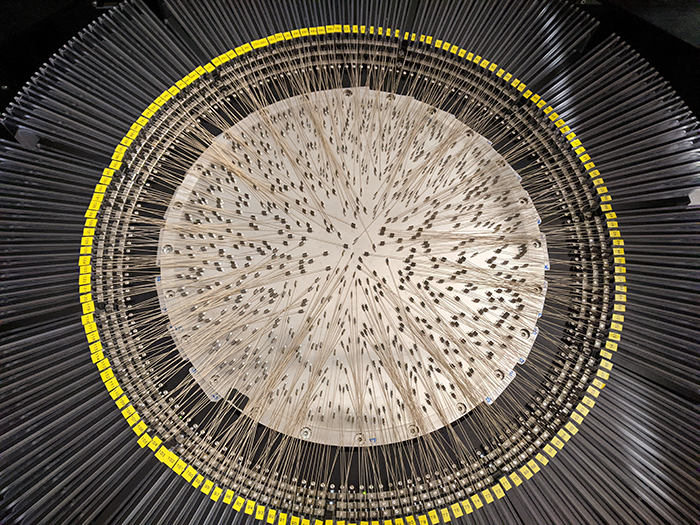
© Gavin Dalton/U. Oxford/STFC-RAL Space
- 1The WEAVE project was funded under the Major Area of Interest 'Astrophysics and conditions for the appearance of life' 2012-2016 of the Île-de-France region (France).
